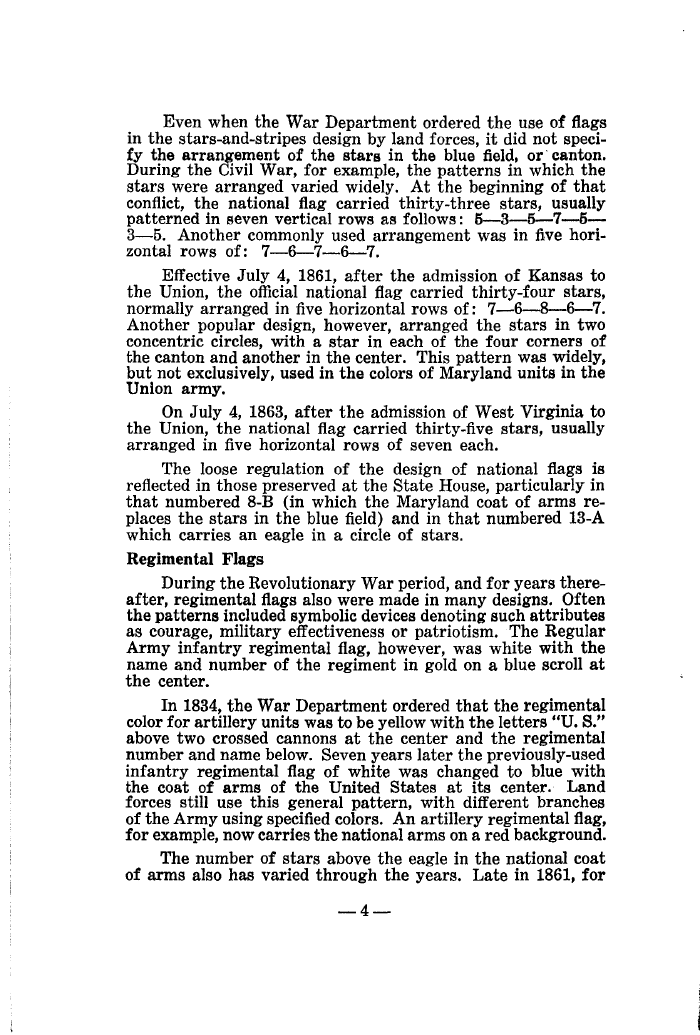 |
||||
 |
||||
| Even when the War Department ordered the use of flags in the stars-and-stripes design by land forces, it did not specify the arrangement of the stars in the blue field, or canton. During the Civil War, for example, the patterns in which the stars were arranged varied widely. At the beginning of that conflict, the national flag carried thirty-three stars, usually patterned in seven vertical rows as follows: 6—3—5—7—5— 3—5. Another commonly used arrangement was in five horizontal rows of: 7—6—7—6—7. Effective July 4, 1861, after the admission of Kansas to the Union, the official national flag carried thirty-four stars, normally arranged in five horizontal rows of: 7—6—8—6—7. Another popular design, however, arranged the stars in two concentric circles, with a star in each of the four corners of the canton and another in the center. This pattern was widely, but not exclusively, used in the colors of Maryland units in the Union army. On July 4, 1863, after the admission of West Virginia to the Union, the national flag carried thirty-five stars, usually arranged in five horizontal rows of seven each. The loose regulation of the design of national flags is reflected in those preserved at the State House, particularly in that numbered 8-B (in which the Maryland coat of arms replaces the stars in the blue field) and in that numbered 13-A which carries an eagle in a circle of stars. Regimental Flags During the Revolutionary War period, and for years thereafter, regimental flags also were made in many designs. Often the patterns included symbolic devices denoting such attributes as courage, military effectiveness or patriotism. The Regular Army infantry regimental flag, however, was white with the name and number of the regiment in gold on a blue scroll at the center. In 1834, the War Department ordered that the regimental color for artillery units was to be yellow with the letters "U. S." above two crossed cannons at the center and the regimental number and name below. Seven years later the previously-used infantry regimental flag of white was changed to blue with the coat of arms of the United States at its center. Land forces still use this general pattern, with different branches of the Army using specified colors. An artillery regimental flag, for example, now carries the national arms on a red background. The number of stars above the eagle in the national coat of arms also has varied through the years. Late in 1861, for _4 — |